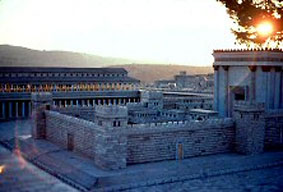Dec
2
2009

And they came to Him and awoke Him, saying, “Master, Master, we are perishing!” Then He arose and rebuked the wind and the raging of the water. And they ceased, and there was a calm. But He said to them, “Where is your faith?” And they were afraid, and marveled, saying to one another, “Who can this be? For He commands even the winds and water, and they obey Him!” (Luke 8:24-25)
You know those times when all life’s troubles and hurdles and temptations seem overwhelming? (Yes, I know I live in the luckiest country in the world.) I think the devil takes great pleasure in piling stuff like that into your mind and watching you panic. Last night, I woke up and this old process began. Like water poured onto sand, it just makes the old furrows (one’s bad thought-habits) grow even deeper.
Continue reading
1 comment | tags: Faith, Luke, Roman Catholicism | posted in Christian Life
Nov
30
2009
 .
.
Victor left some comments on Mother of Invention which I think deserve a new post:
Hello Mike!
I’m a student of typology – endlessly fascinating endeavor! – and am not and never have been Catholic myself. I would like to comment on your point about the Ark of the Covenant. (I just noticed that MS Word wants to capitalize “ark of the covenant”!)
I understand that you recognize the many parallels between the “Visitation” account in Luke 1 and the Ark’s journey narrated in 2 Samuel 6. The cumulative effect of the many commonalities between them makes the typological connection impossible to be denied. I can’t help but recognize its validity.
OTOH, I understand that you’re trying to say that in the specific context of Luke 1 the Ark should be interpreted as an image of Christ, not of Mary.
I can see a link between the person of Christ and the Ark, but, in the precise context of Luke 1, it seems inescapable to me that the comparison is made between the Ark and the person of Mary the mother of Jesus. That’s the whole gist of the correlation between the stories of 2 Samuel and Luke.
Continue reading
2 comments | tags: Ark of the Covenant, Leviticus, Luke, Mary, Roman Catholicism, Tabernacle | posted in Biblical Theology
Oct
19
2009
More Thoughts on Prophetic Cauldrons
“Out of the frying pan into the fire.”
 The structure of Ezekiel follows the “soundwaves” pattern found in a great deal of the Bible, particularly the prophets. The Lord speaks His word as liturgy from the Most Holy Place, it is pre-enacted by the prophet in a new “Holy Place” (from outside the city – see Rags to Robes) in some terrifying judgments as object lessons (see Liturgy as Prophecy), and then the same judgments are played out in greater detail in the “Outer Court.” All three sections are heptamerous, and in these three areas we have Word, Sacrament (the prophet as a kind of new “acting” High Priestly mediator – see How to Read the Prophets), and Government.
The structure of Ezekiel follows the “soundwaves” pattern found in a great deal of the Bible, particularly the prophets. The Lord speaks His word as liturgy from the Most Holy Place, it is pre-enacted by the prophet in a new “Holy Place” (from outside the city – see Rags to Robes) in some terrifying judgments as object lessons (see Liturgy as Prophecy), and then the same judgments are played out in greater detail in the “Outer Court.” All three sections are heptamerous, and in these three areas we have Word, Sacrament (the prophet as a kind of new “acting” High Priestly mediator – see How to Read the Prophets), and Government.
The book of Ezekiel begins with this pattern, so we have the prophetic cauldron turn up three times. Each cycle takes us through the Tabernacle speeches (Exodus 25-31) which follow the Creation Week, so this is a process of new Creation for the anointing of Ezekiel and of de-Creation for the old Tabernacle of Solomon’s Temple. It was decayed and ready to vanish away.
Continue reading
Comments Off | tags: Babylon, Daniel, Ezekiel, Luke, Nebuchadnezzar | posted in Biblical Theology, The Last Days, The Restoration Era
Sep
1
2009
“…that you may become blameless and harmless, children of God without fault in the midst of a crooked and perverse generation, among whom you shine as lights in the world” Phil. 2:15
Acacias, not Mulberries
 So, acacia wood is at the heart of the Holy furniture. The Tabernacle is a wilderness world glorified by Spirit-filled men and brought into the tent of God,[1] under the wing of Boaz, under the friendly firmament of a new Covenant, under the great tree that grows to shelter the nations.
So, acacia wood is at the heart of the Holy furniture. The Tabernacle is a wilderness world glorified by Spirit-filled men and brought into the tent of God,[1] under the wing of Boaz, under the friendly firmament of a new Covenant, under the great tree that grows to shelter the nations.
Continue reading
Comments Off | tags: AD70, Angels, David, Jewish war, Josephus, Luke | posted in Biblical Theology, Quotes, The Last Days





























